1lumen selects and reviews products personally. We may earn affiliate commissions through our links, which help support our testing.
NEXTORCH UT41 review
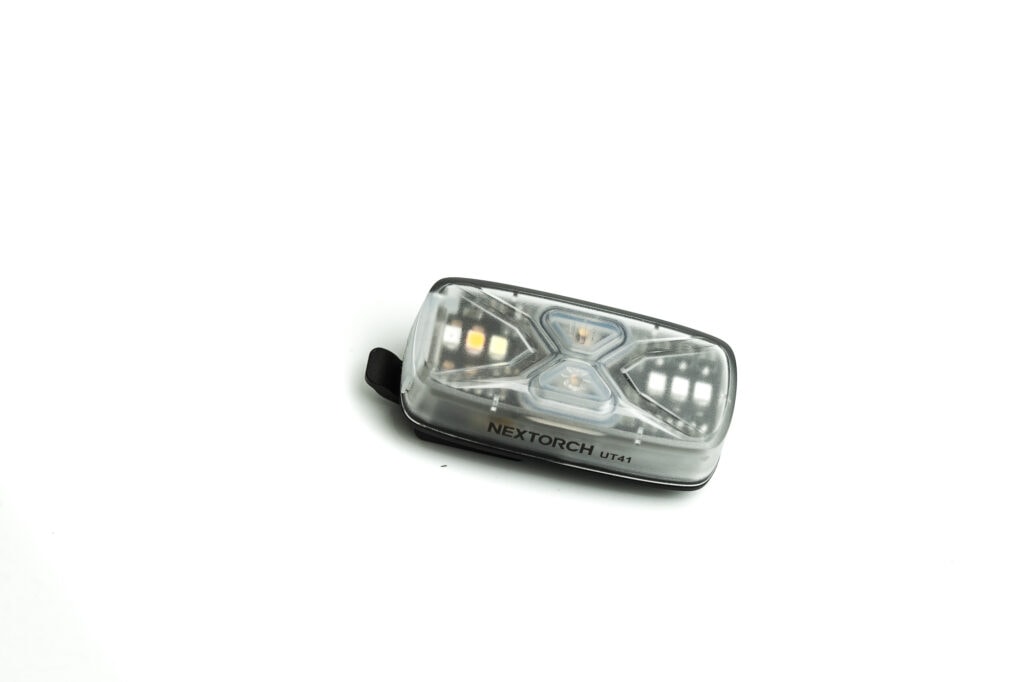
NEXTORCH UT41 specifications
| Brand/model | NEXTORCH UT41 |
|---|---|
| Flashlight category | EDC / Bike / Helmet lamp |
| LED | Multi color |
| Max. output | 20 Lumens |
| Max. beam distance | ? meters |
| Max. beam intensity | ? cd |
| Battery config. | Built-in 500mAh |
| Onboard charging | USB-C |
| Modes | 6 + flashing |
| Blinkies | Flashing |
| Waterproof | IPX8 |
| Review date | September 2023 |
Review intro:
NEXTORCH is known for their tactically oriented flashlights and law enforcement gear. They supply many products to over 100 countries and agencies around the world.
However, their “TU” lineup is relatively small compared to their more popular “EC” or “TA” lineup. And currently, there are only a handful of options available in this category, including the UT10C, UT22, UT30, and this UT41.
Package quality.
The UT41 is shipped in a white cardstock box with the NEXTORCH logo and a photo of the light in front. The back has specifications and some pictures of the light. And since the flashlight has no replaceable battery, you don’t need to buy a separate charge. Just charge the UT41 with the included cable, and you’re ready to go.
This is what you can find inside the box:
- NEXTORCH UT41
- USB-C cable
- User Manual
That’s not much, but it’s enough to get you get going.
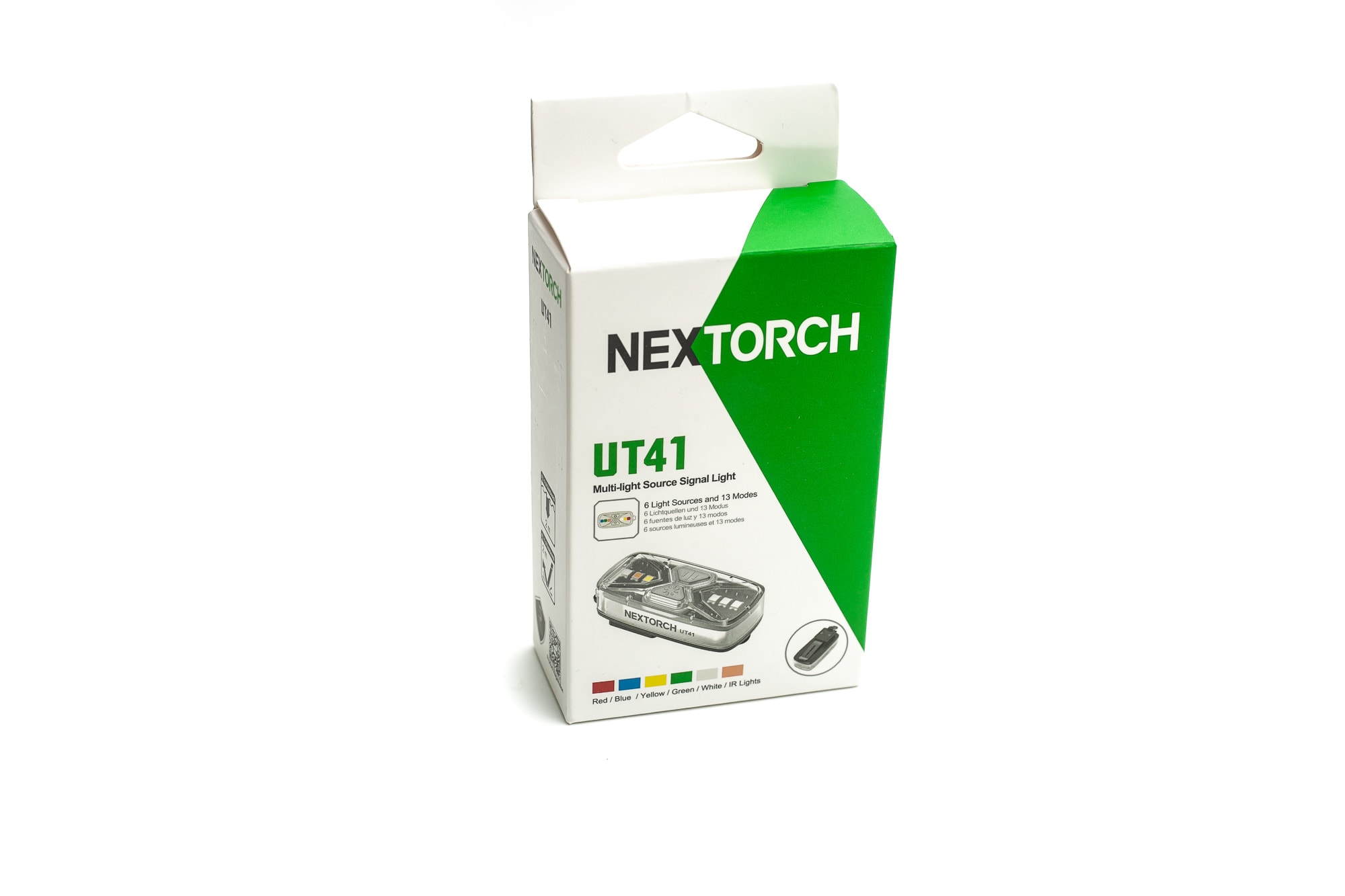

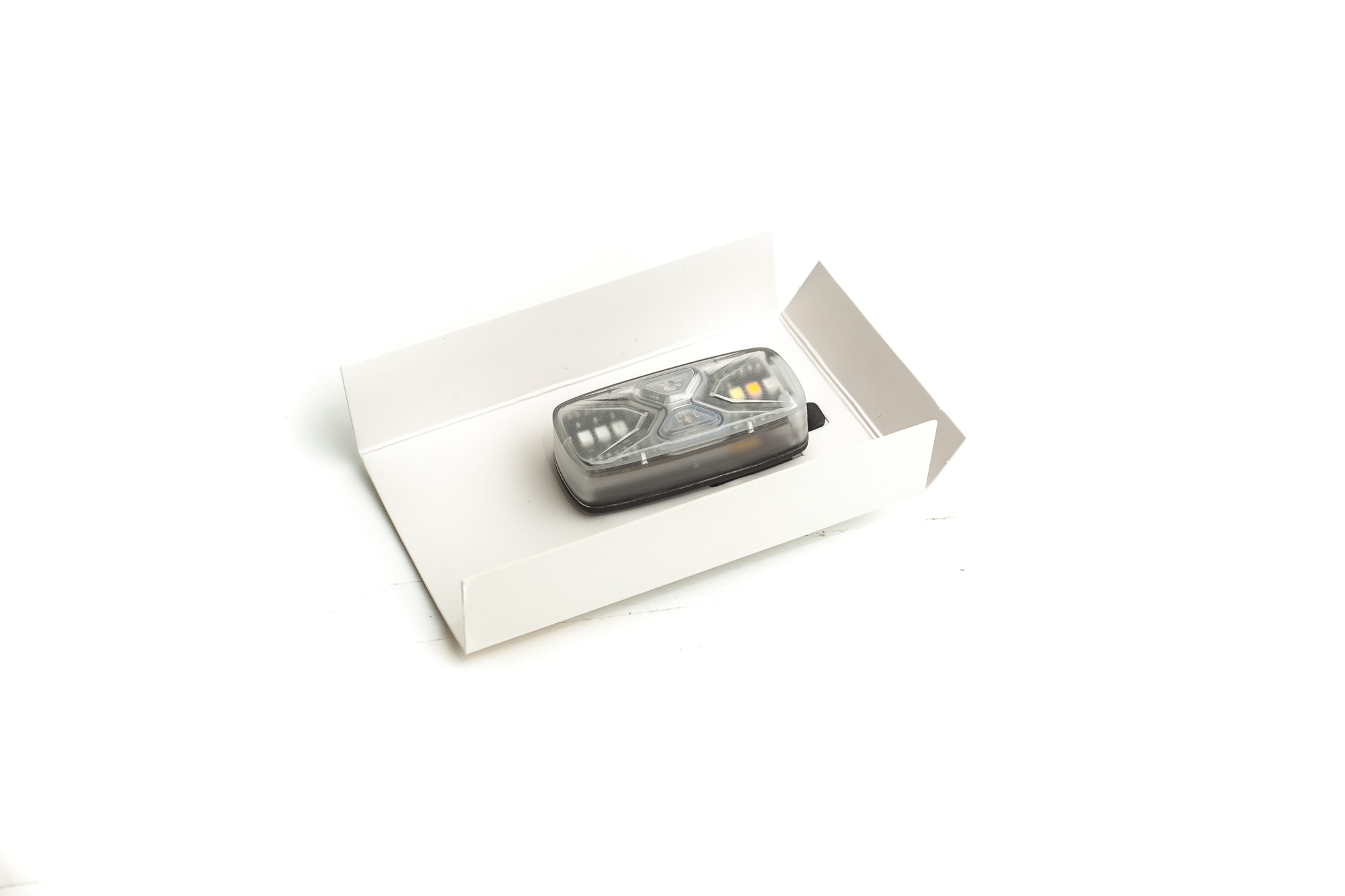
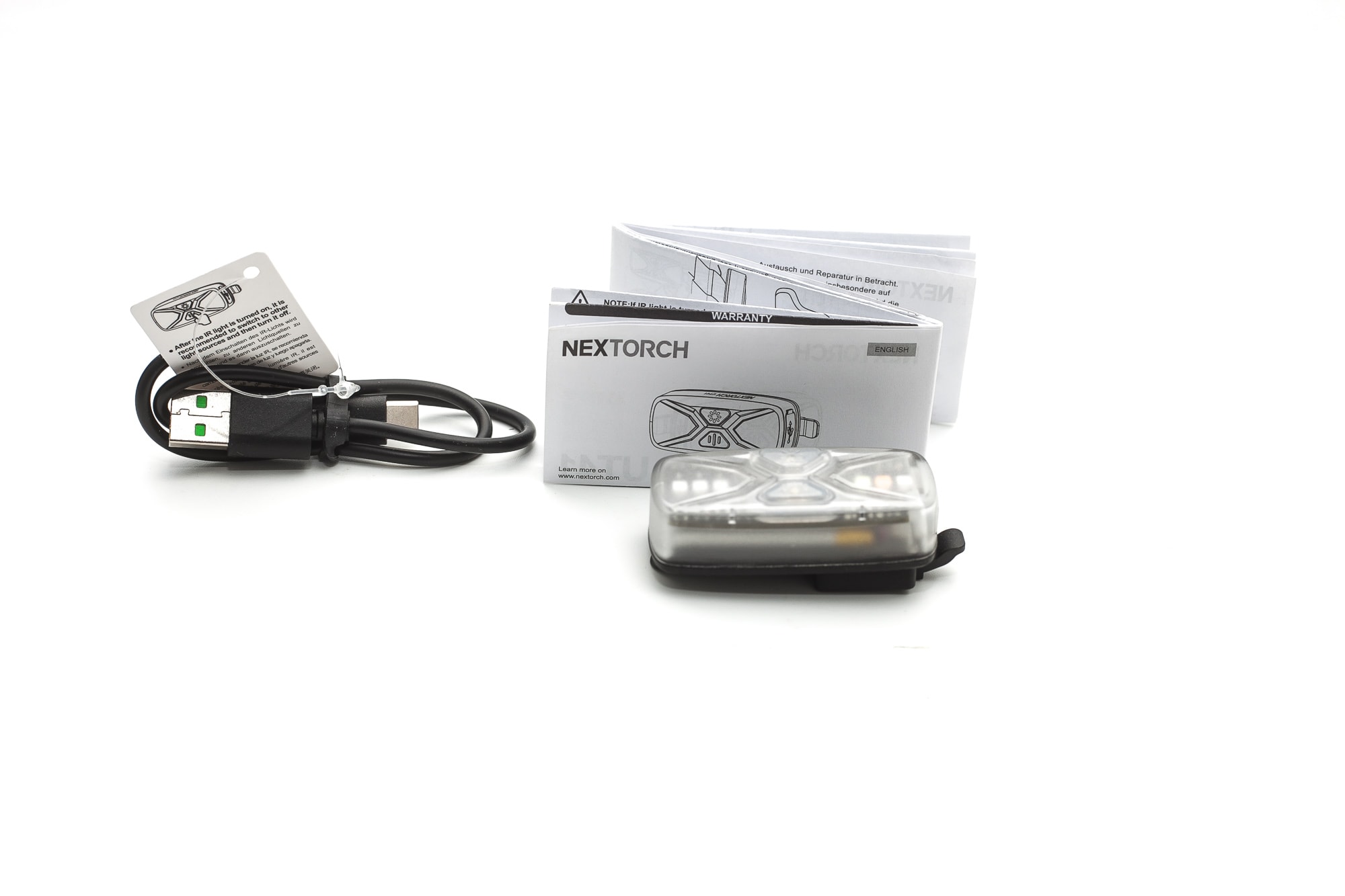
Flashlight in use
The UT41 is made of translucent plastic, and with a clip on the rear to make it attach to anything thin and flat. However, that’s not all, because it also allows it to be mounted on a MOLLE or helmet with ARC rails. It’s not meant to be used in hand.
I tried to clip it to my pants, and that worked perfectly. You can also clip it to the bill of a baseball cap, or actually on any thing that is thin, including a belt, or even a coat. And I could imagine it to be used while hiking or biking, since you can easily spot the person wearing it. It’s not really mean to illuminate anything (except for probably a map or something up really close) but to be noticed in the dark.
The clip is pretty stiff, and right where the clip touches the plastic, there are some type of knurling for extra grip.
There are 2 switches, located on top of each other. The top one is for power and protrudes, and the bottom is for changing colors (and protrudes less). But the power switch is also used to switch between solid color and blinking.
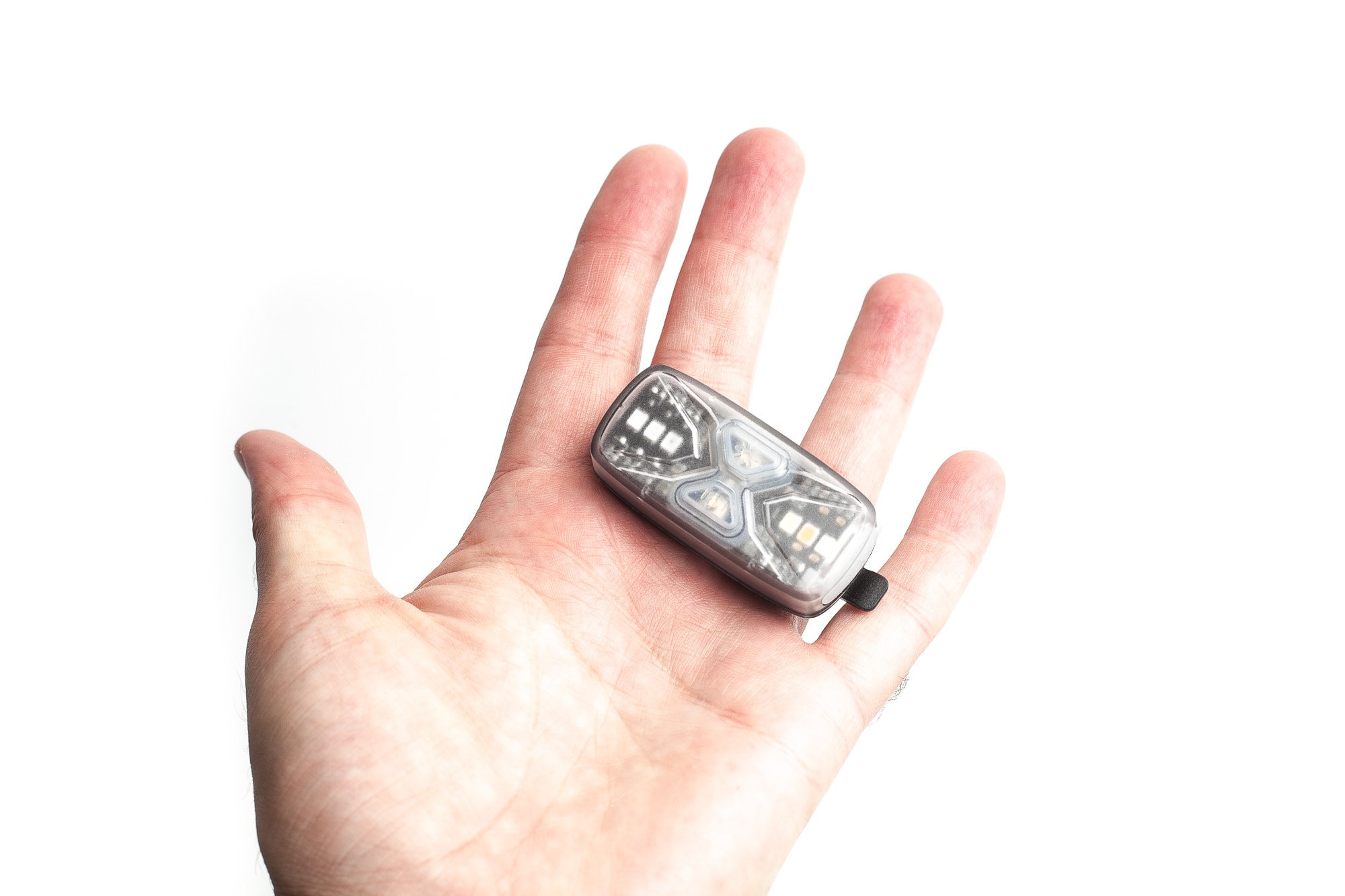
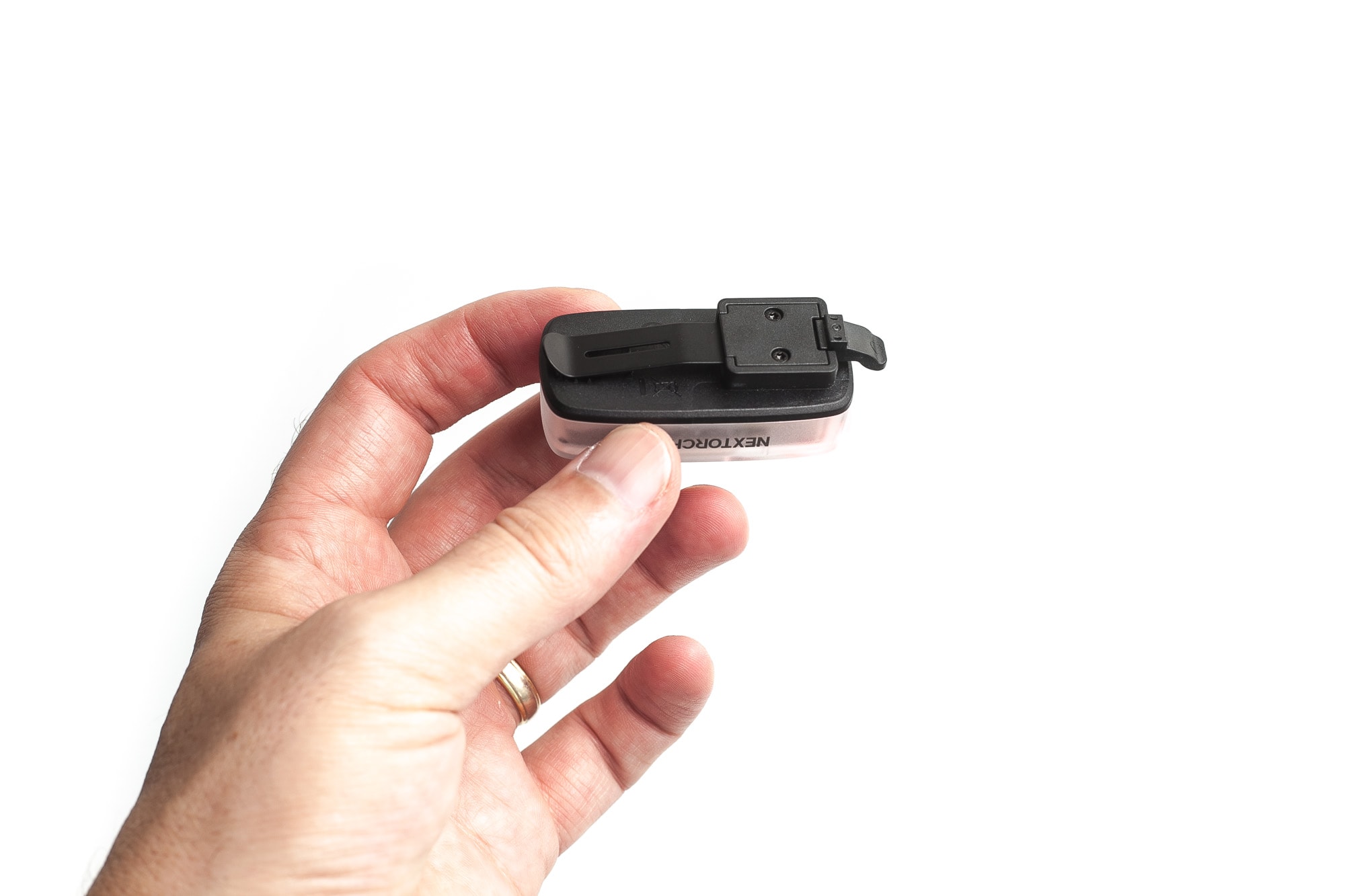
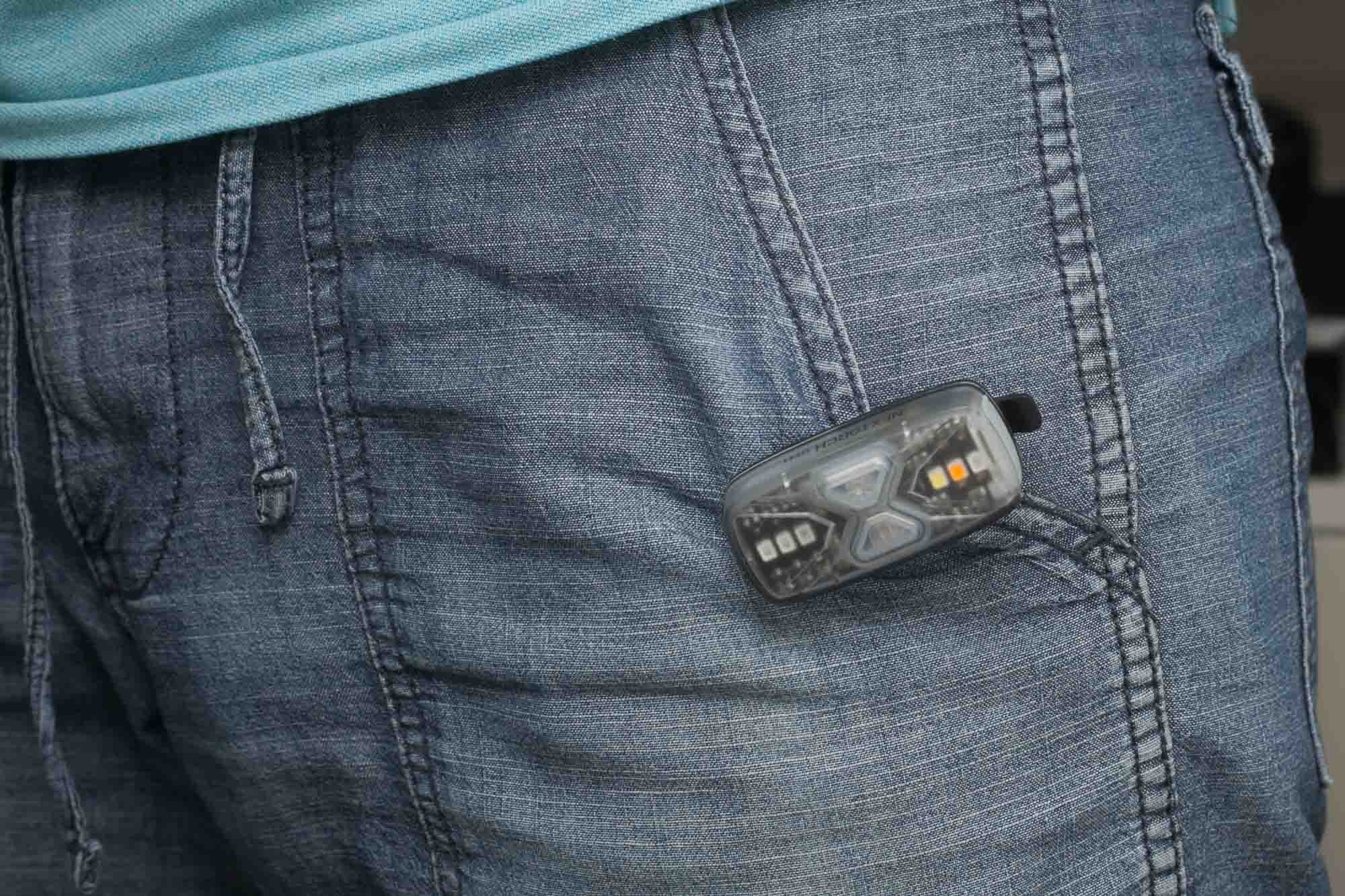
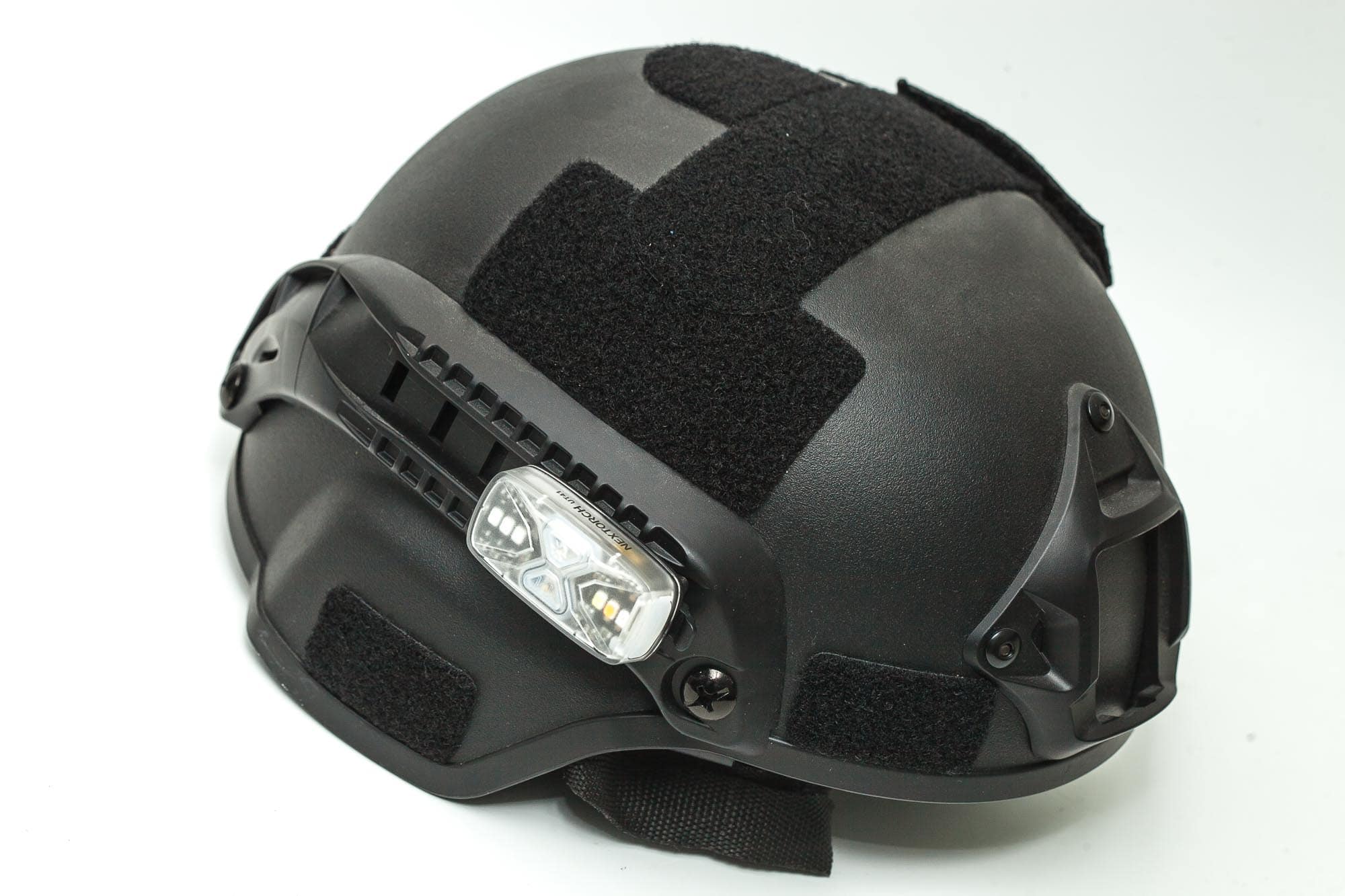
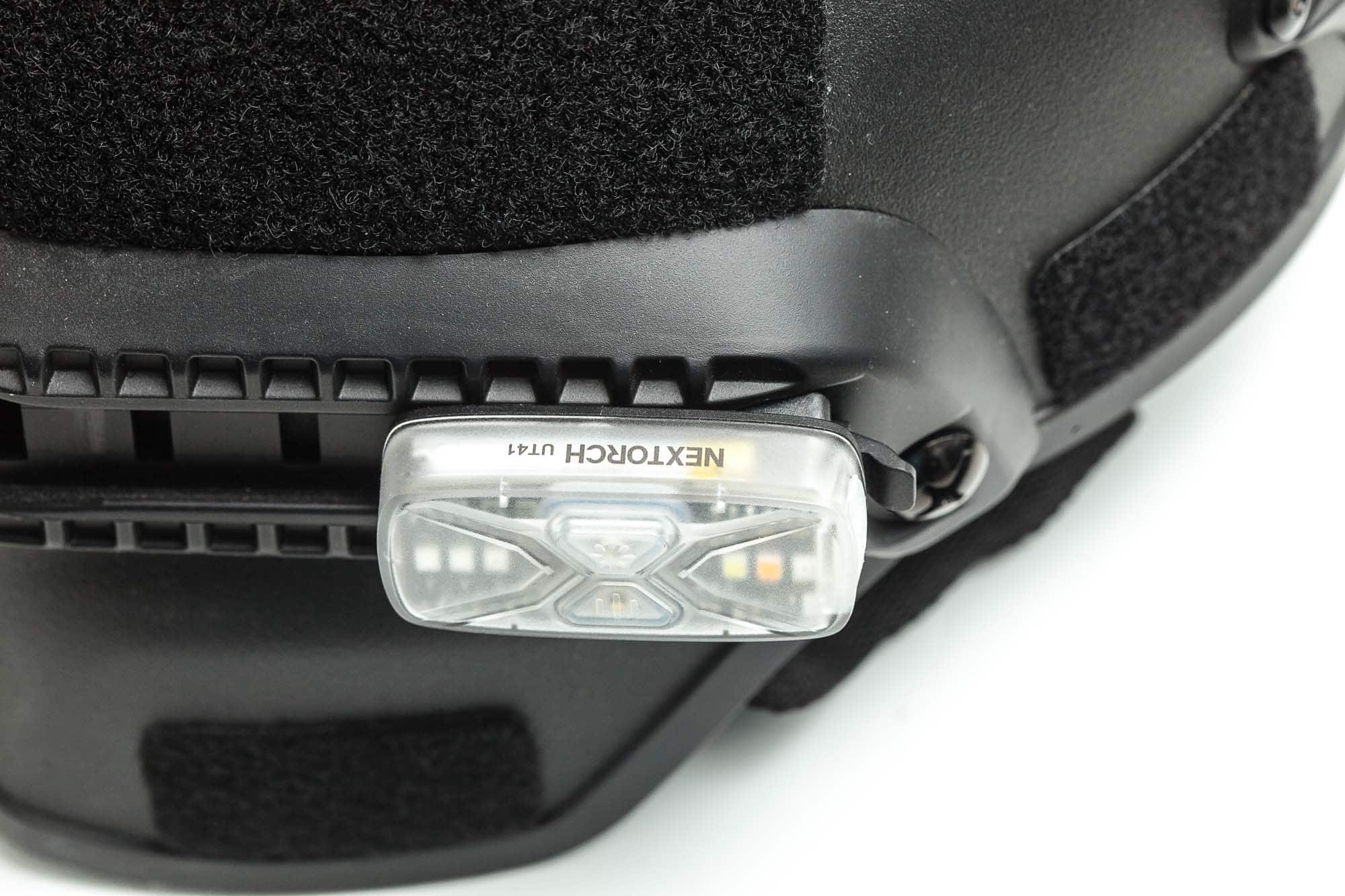
Build Quality and Warranty
The NEXTORCH UT41 is made of plastic, and therefore much less durable than something made of aluminum. And since this is not your average flashlight, I wouldn’t worry about that too much.
There are no removable parts, so there is no threading or anything, and the only thing that can be opened is the USB-C charging port. It’s covered by a translucent cover for protection.
Warranty:
NEXTORCH® guarantees our products to be free from any defects in workmanship and/or materials for 5 years. If products are found to be defective we will replace them at our sole discretion. NEXTORCH® reserves the right to replace an obsolete product with current production.
NEXTORCH® provides free maintenance service for products with quality problems under normal use within 5 years since the purchase date. Please note, quality problems do not include regular wear and tear or things like the lamp burning out, batteries draining, or switches wearing out. Nor does it cover damages resulting from abnormal use, abuse, neglect, battery damage, use of non-NEXTORCH® brand batteries or accessories, unauthorized modifications or repairs.
The above warranty excludes accessories, while chargers and rechargeable batteries are covered within one year.
In the event that any issues with a NEXTORCH® product are not covered under this warranty, NEXTORCH® can arrange to have the product repaired or replaced for a reasonable fee.
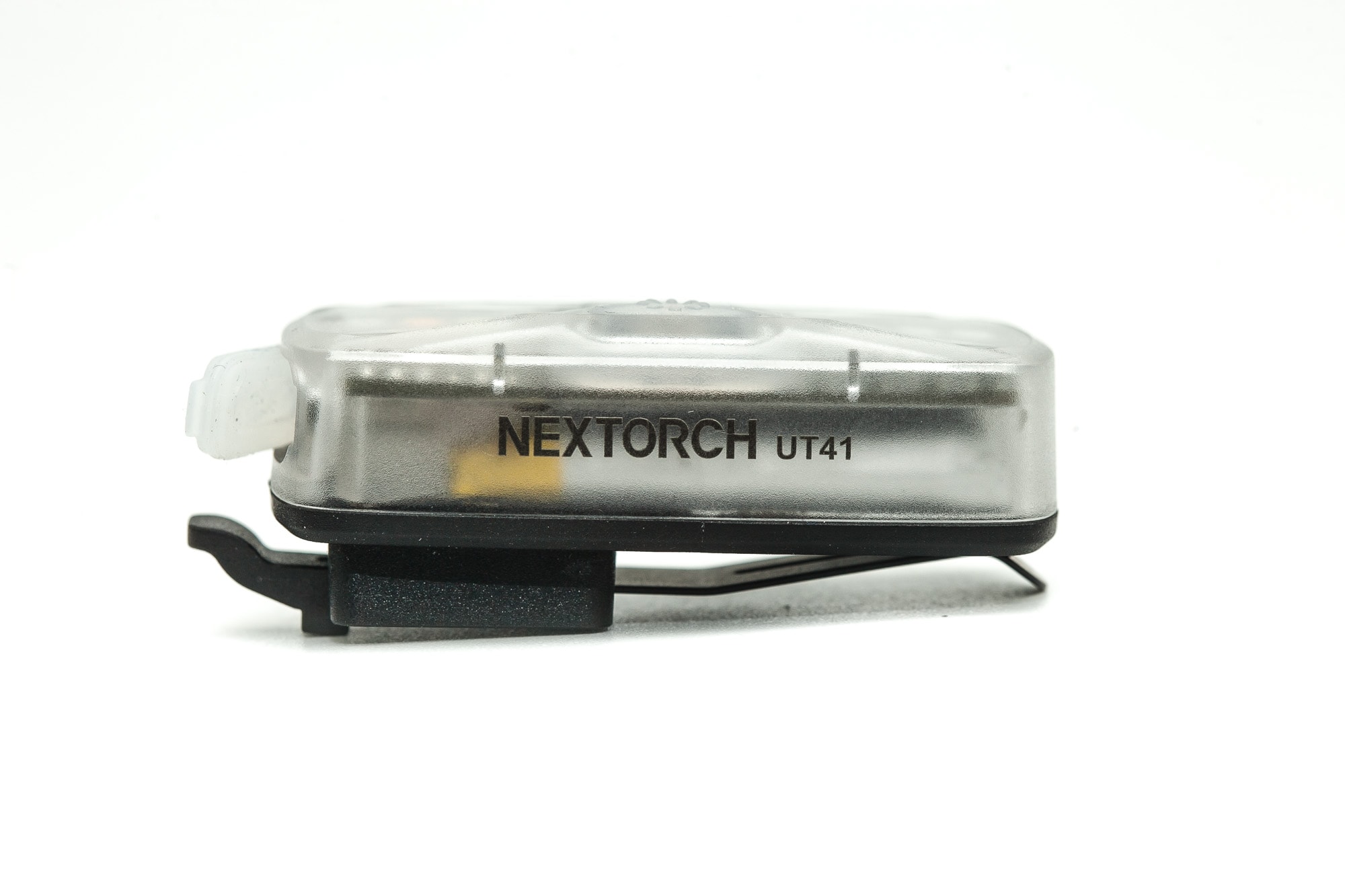
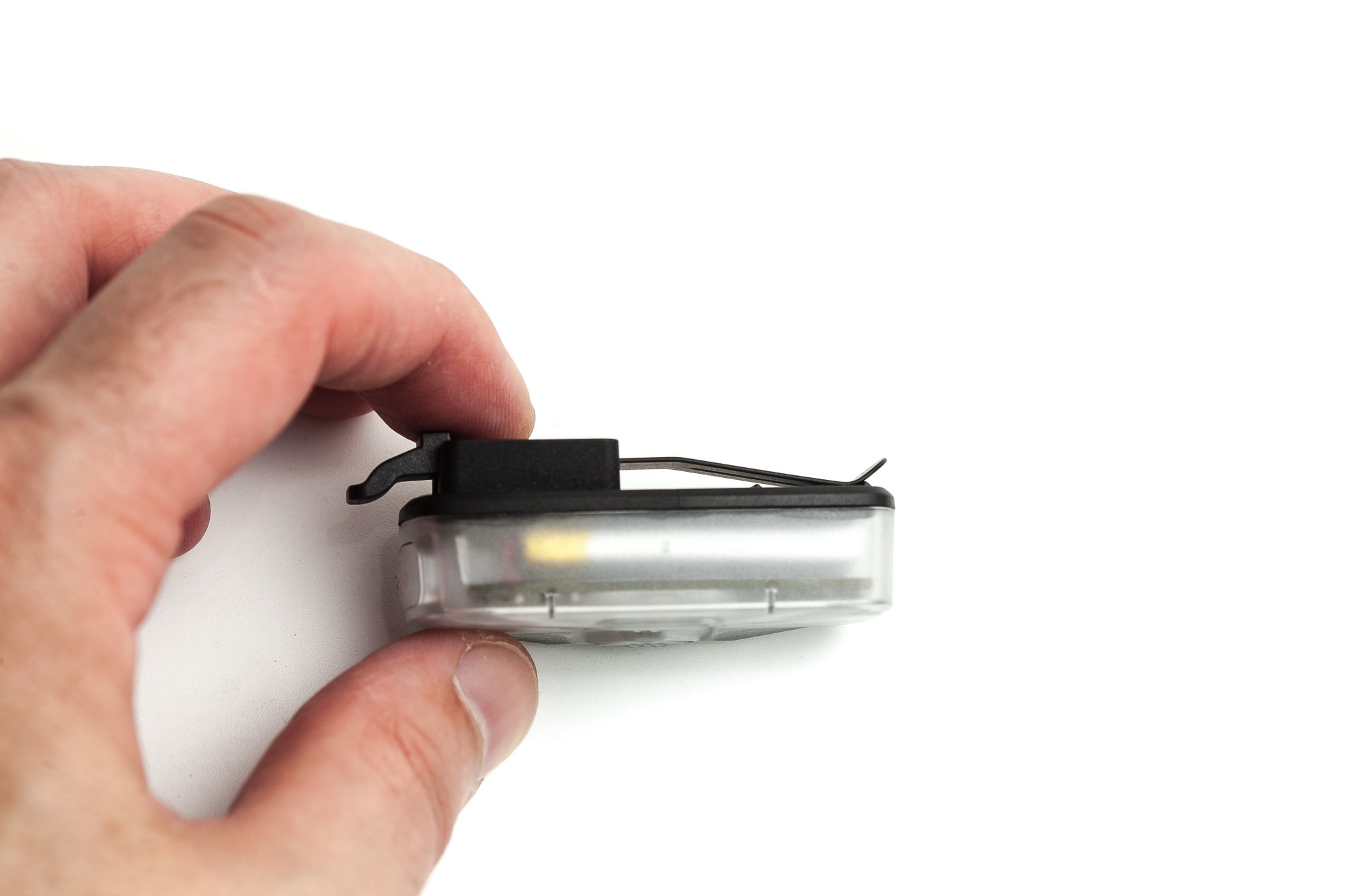
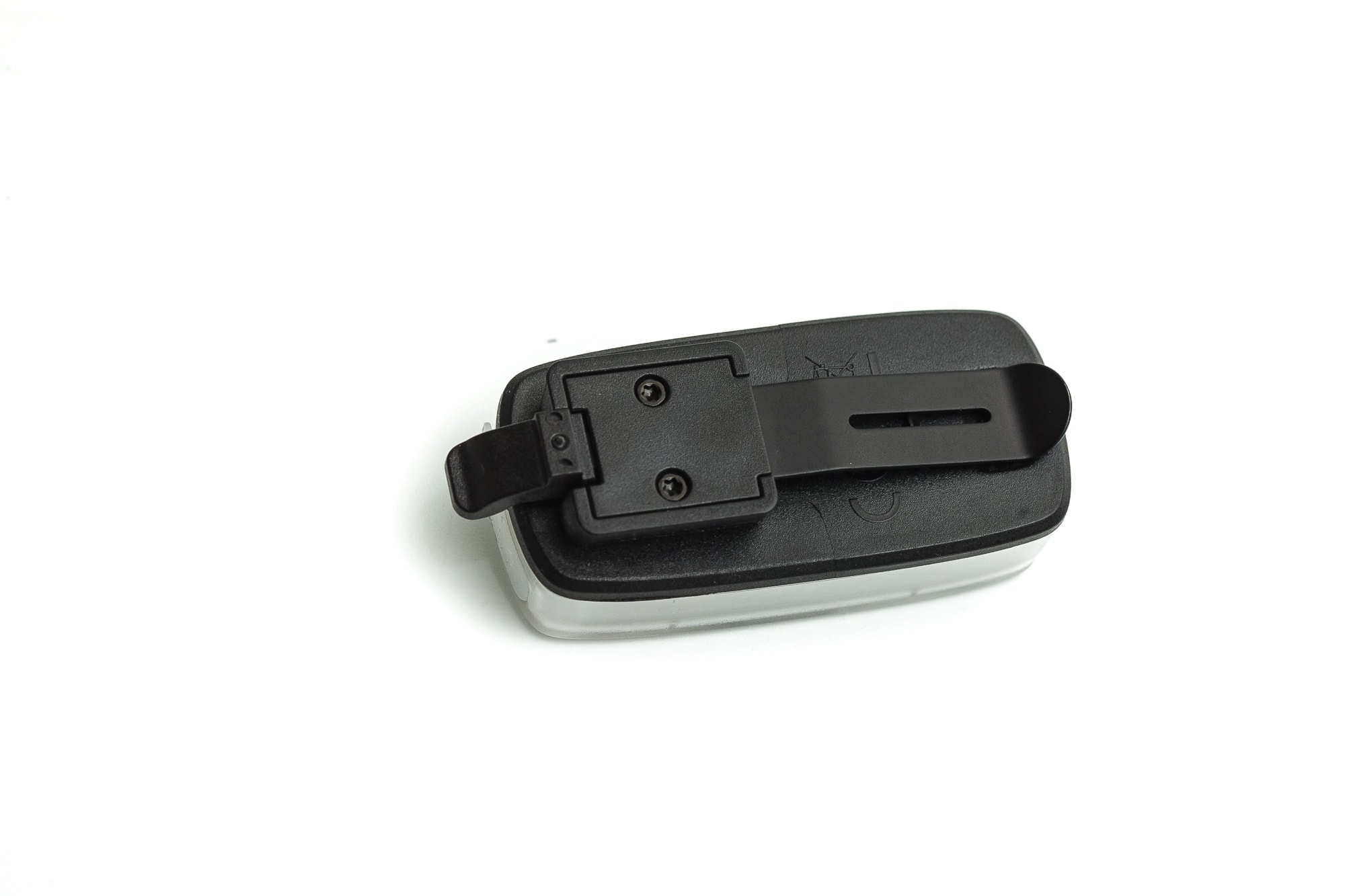
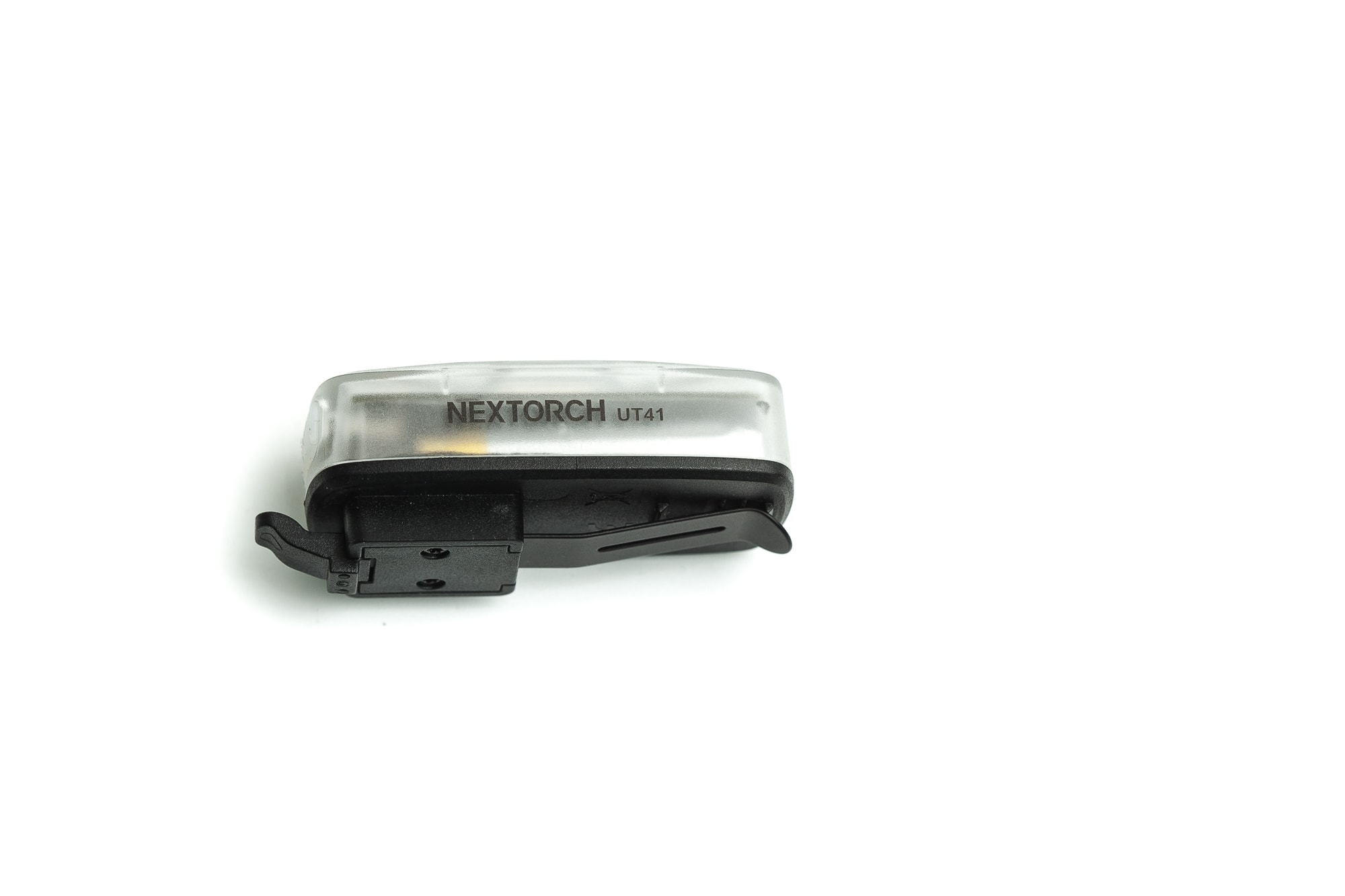
LED, Lens, Bezel, Beam, and Reflector
What makes the UT41 unique is the use of 5 colors and 1 infrared LED. The colors used are:
Red, Blue, Yellow, Green, White, Infrared (hard to see).
And each of these colors can blink… so you can switch between a solid red, and a blinking red, etc.
But after you run through all the normal modes, there is also a Red and Blue flashing mode. This does look a lot like something not allowed in certain areas, because it does look like a police light.
INFRARED:
Infrared mode is hard to see by eye, especially in a bright environment.. You better make sure you turn the flashlight off in a normal mode, because it may appear that the flashlight is off, while actually using IR.
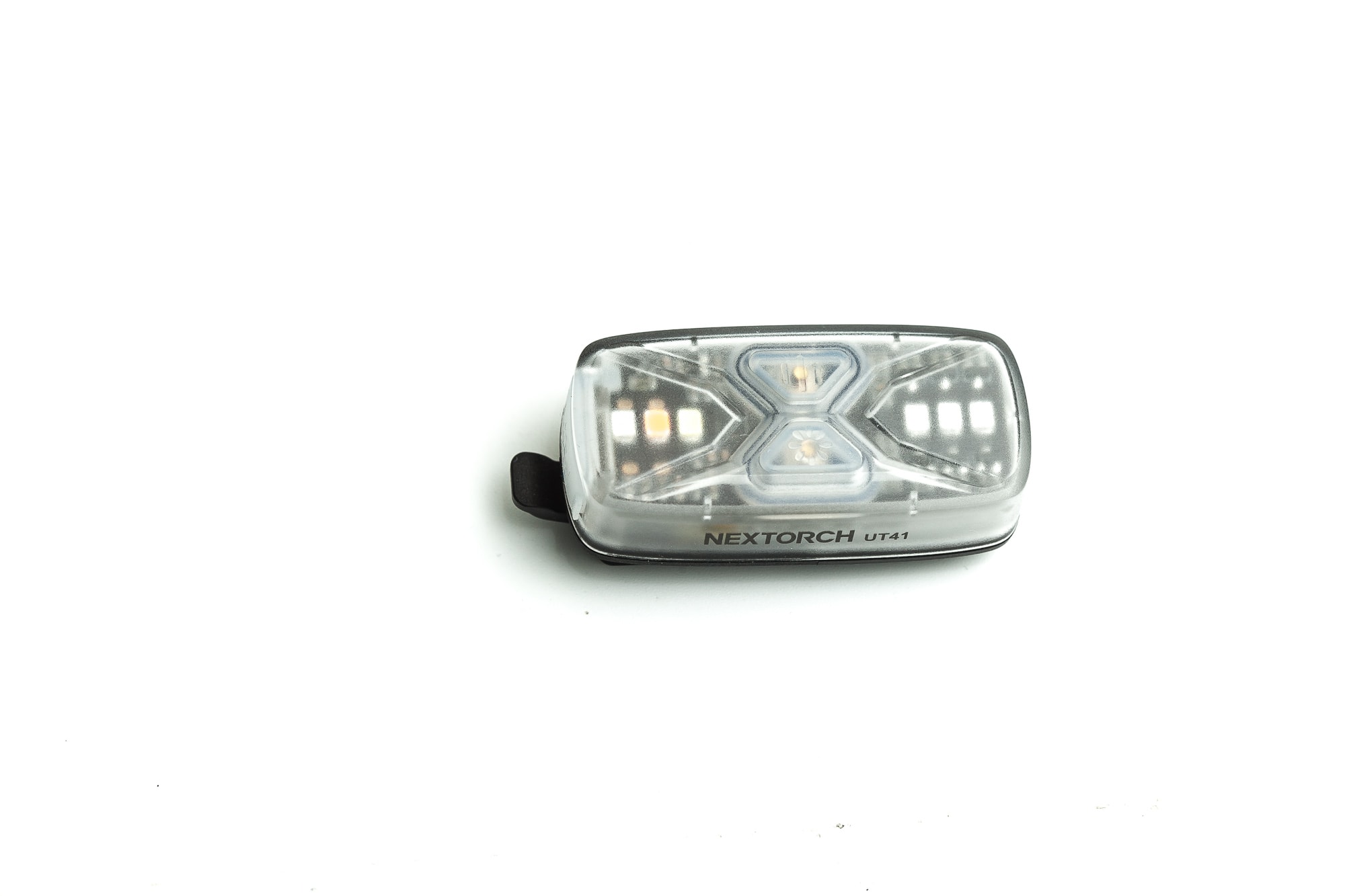
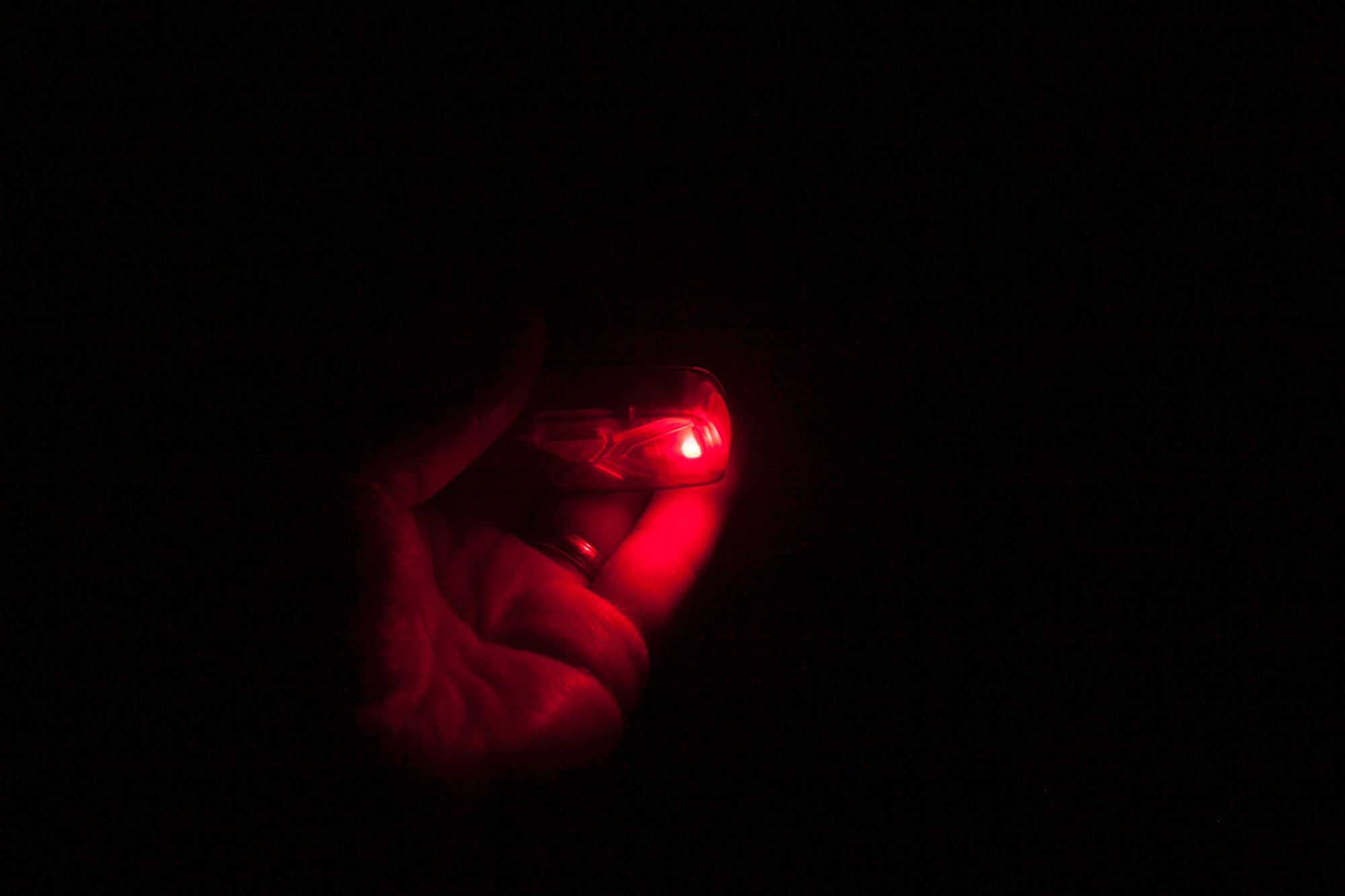
Dimensions and its competition
Dimensions:
| NEXTORCH UT41 | Millimeters | Inches |
|---|---|---|
| Length | 56 mm | 2.2 in |
| Width | 27mm | 1.1 in |
| Thickness | 23 mm | 0.9 in |
Dimensions are rounded to the nearest millimeter, and to the nearest tenth of an Inch.
Weight:
| NEXTORCH UT41 | Weight in grams | Weight in oz. |
|---|---|---|
| Weight | 28 g | 0.98 oz |
Weight is rounded to the nearest gram, and to the nearest tenth of an Oz.
NEXTORCH UT41 comparison
Size compared to other tiny flashlights
From left to right: Wuben X0, NEXTORCH UT41, Olight Perun 2 Mini, Nitecore TUP
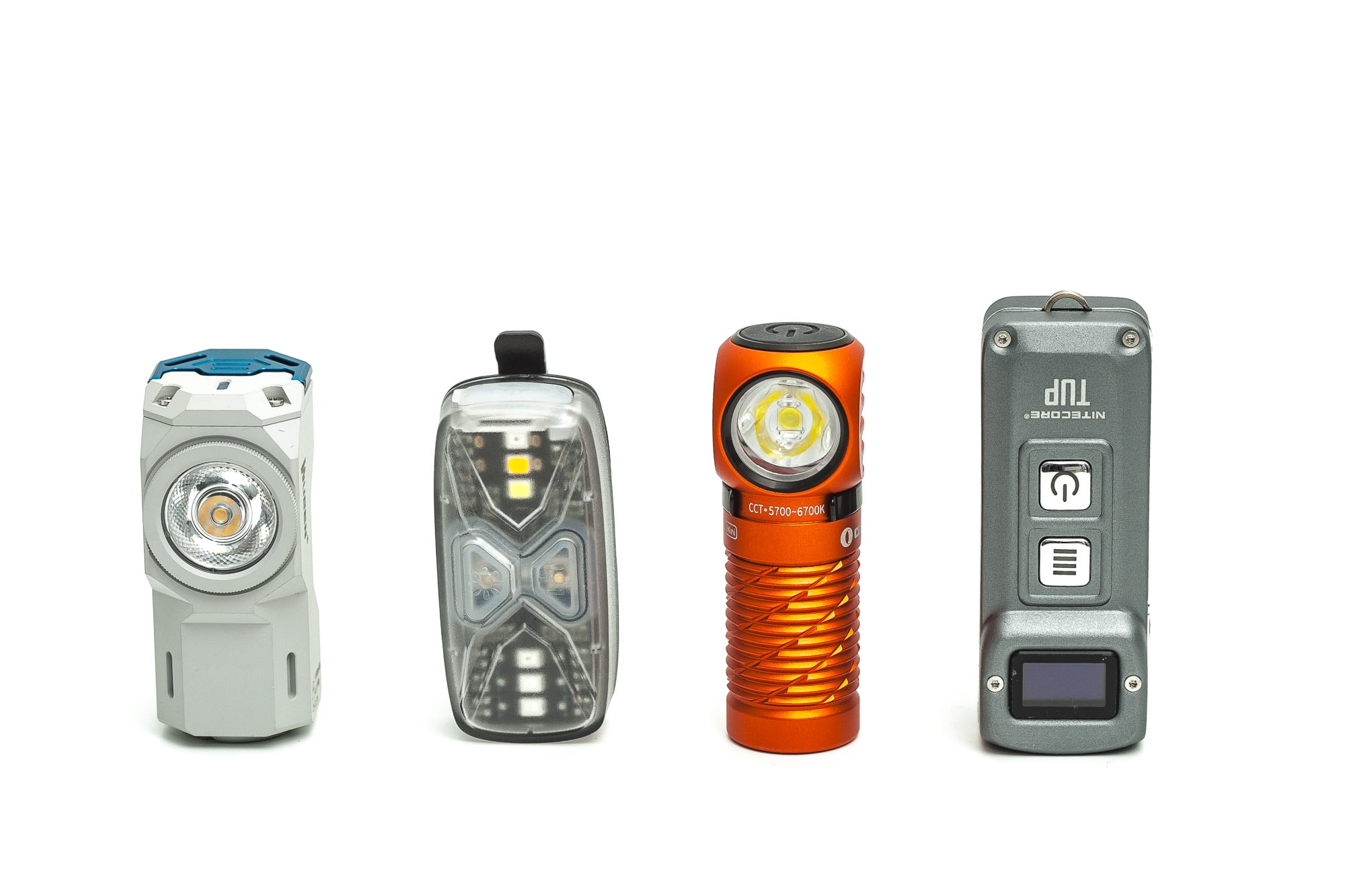

NEXTORCH UT41: User interface
Available modes:
- Red, Blue, Yellow, Green, White, Infrared (hard to see).
Available blinky modes: (blinks about once ever 1 second)
- Red, Blue, Yellow, Green, White + red and blue flashing
From OFF:
- Top, Power switch 1 click: Turn on in last used color, continuously
- Top, Power switch 2 clicks: Turn on in last used mode, blinking
- Bottom, Mode switch 1+ click: Nothing
From ON:
- Top, Power switch 1 click within 3 seconds after turn on: change to blinking mode
- Top, Power switch 1 click after 4 seconds: flashlight turns off
- Bottom, Mode switch 1+ clicks: runs through all the colors
Mode memory:
- Yes, there is. It remember the last used modememory mode. The first setting is always High.
Shortcuts:
- To Strobe: Double Half Press for momentary or Half Press and Click to lock in that mode.
Low voltage warning:
- When turning on the flashlight, the battery indicator will show the charge status:
- Blue: 75-10%
- Blue flashing: 50-75%
- Red: 20-50%
- Red flashing: 0-25%
Strobe/blinkies
- There is only a police strobe, where blue and red will flash. The other bliny modes are just blinking once every 1 second. Great for locating people.
Lock-out mode:
- There is no lock-out mode
PWM
- No PWM was visible
NEXTORCH UT41 Charging and batteries
The UT41 uses a built-in battery with a capacity of 500mAh according to specs. The battery can be charged with a USB-C cable, however it does only so with a USB-A to USB-C cable, like the one they included in the package. It does not charge when using a USB-C to USB-C cable.
The total charge time was 2 hours and 8 minutes from empty to full, and had a charge current of about 300mA at 5V.
The manual also states that the battery should be recharged every 3 months to

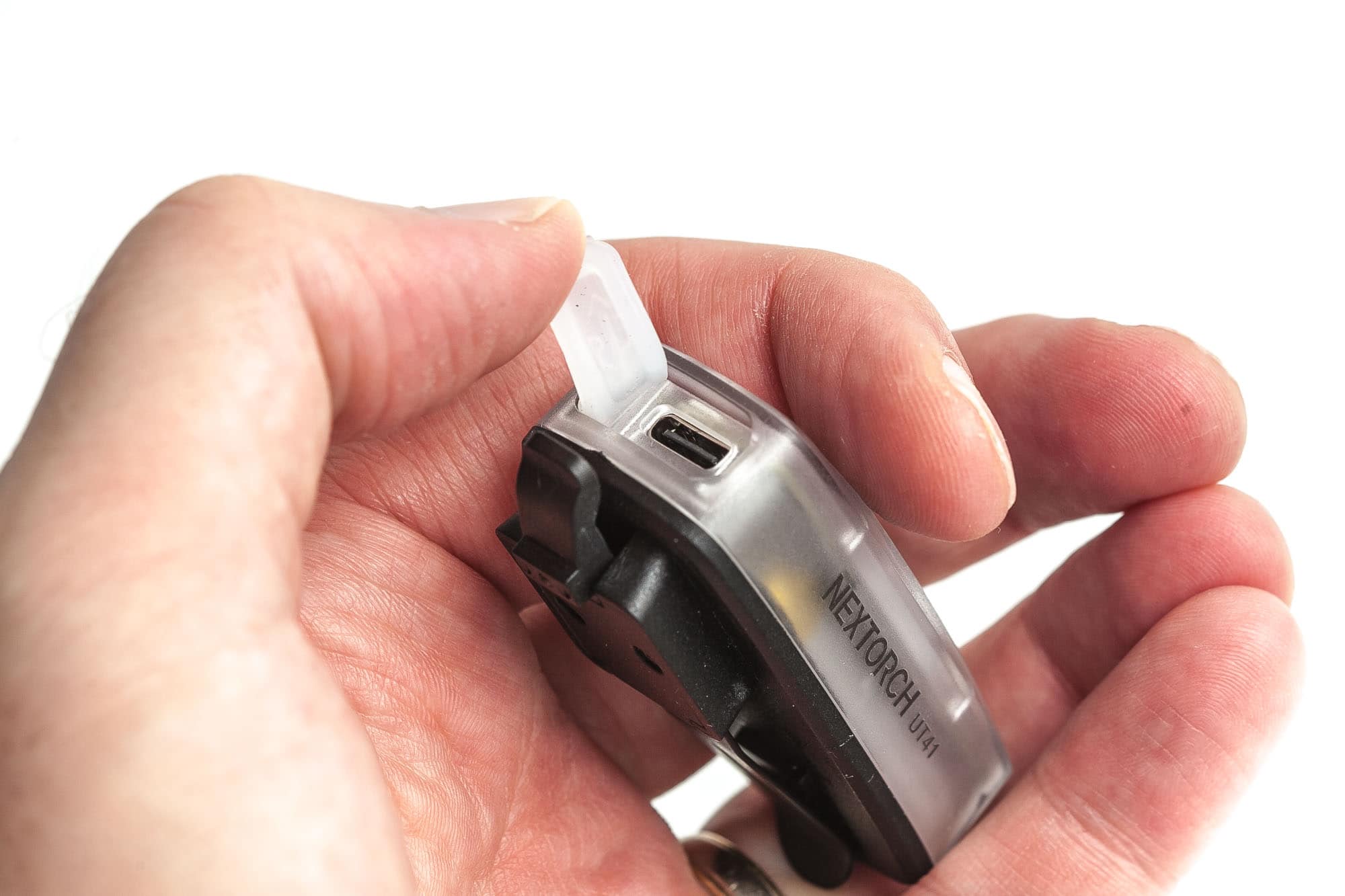
Performance test
This is the gear I use for testing:
| Gear | Purpose | Link to buy |
|---|---|---|
| Hagner E4-X | Measuring beam intensity (throw) | Inquire at Hagner.se |
| 2* Extech SDL400 | Lumens and logging runtimes | Amazon.com, Amazon.co.uk, |
| Leica Disto D2 | Distance for throw measurements | Amazon.com, Amazon.co.uk, |
| Sekonic C-800 | Spectrometer for LED measurements | Amazon.com, Amazon.co.uk |
| Uni-T UTi260B | Thermal Image camera | Amazon.com, |
Lumen measurements:
How Lumens are Measured: Understanding ANSI FL1 Standards How Lumens are Measured: Understanding ANSI FL1 Standards: The ANSI FL1 standards specify that output in lumens should be measured 30 seconds after turning on, as this is the standardized time for measuring brightness according to the industry standard. This is why we focus on this part in our measurements. The ANSI FL1 standards require an ambient temperature of 22 ± 3°C. We record the ambient the ambient temperature to identify potential reasons for any observed discrepancies.The output measurements in this review are based on my homemade integrating spheres, each equipped with an Extech SDL400 Lux Meter. For consistency and accuracy, a calibration light (Convoy S2+ with 249lm and a Convoy S2+ with 261lm) is measured prior to each set of lumen measurements.
For high-output lights, one of the lux meters uses an ND camera filter to prevent the lux meter to max out. This is either the Kenko PRO1D ND16 up till about 80,000 lumens or Gobe ND32 for anything above.
The measurements were taken manually at turn on and 30 seconds. The 10 minute numbers are taken from the runtime graph.
And I only measured 3 colors, since I am not sure how accurate the others would be, measured by my luxmeter. Here are the Lumen output numbers:
| NEXTORCH UT41 | Specs | Measured at turn on | 30 sec | 10 minutes |
|---|---|---|---|---|
| White | 20 lm | 21 lm | 22 lm | 21lm |
| Yellow | 9 lm | 11 lm | 11 lm | – |
| Red | 3 lm | 3 lm | 3 lm | 3lm |
I ran 2 runtime tests, for white and red to see if they were close to specifications.
NEXTORCH UT41 Battery life and runtime
How Runtimes are Measured: Understanding ANSI FL1 Standards About ANSI FL1 runtime standards: The runtime is measured until the light drops to 10% of its initial output (30 seconds after turning on). This does not mean that the flashlight is not usable anymore. The last column shows how long the light actually works till it shuts off. If there is a + symbol, it means that the test was stopped at that particular point, but the light was actually still running. This happens on certain occasions, with certain drivers, firmware, or batteries.The runtime test was done with the 50cm integrating sphere, including the Extech SDL400 data logging Lux Meter.
| Mode | Specified runtime | Measured runtime (ANSI FL1) | Time till shut off |
|---|---|---|---|
| Red | 18h | 20h 33min | 20h 33min |
| White | 12h | 12h 49min | 12h 49min |
This means that the runtimes were better than advertised

Beamshots
The shed is about 65 meters / 71 yards away, and the reflective fence about 200 meters.
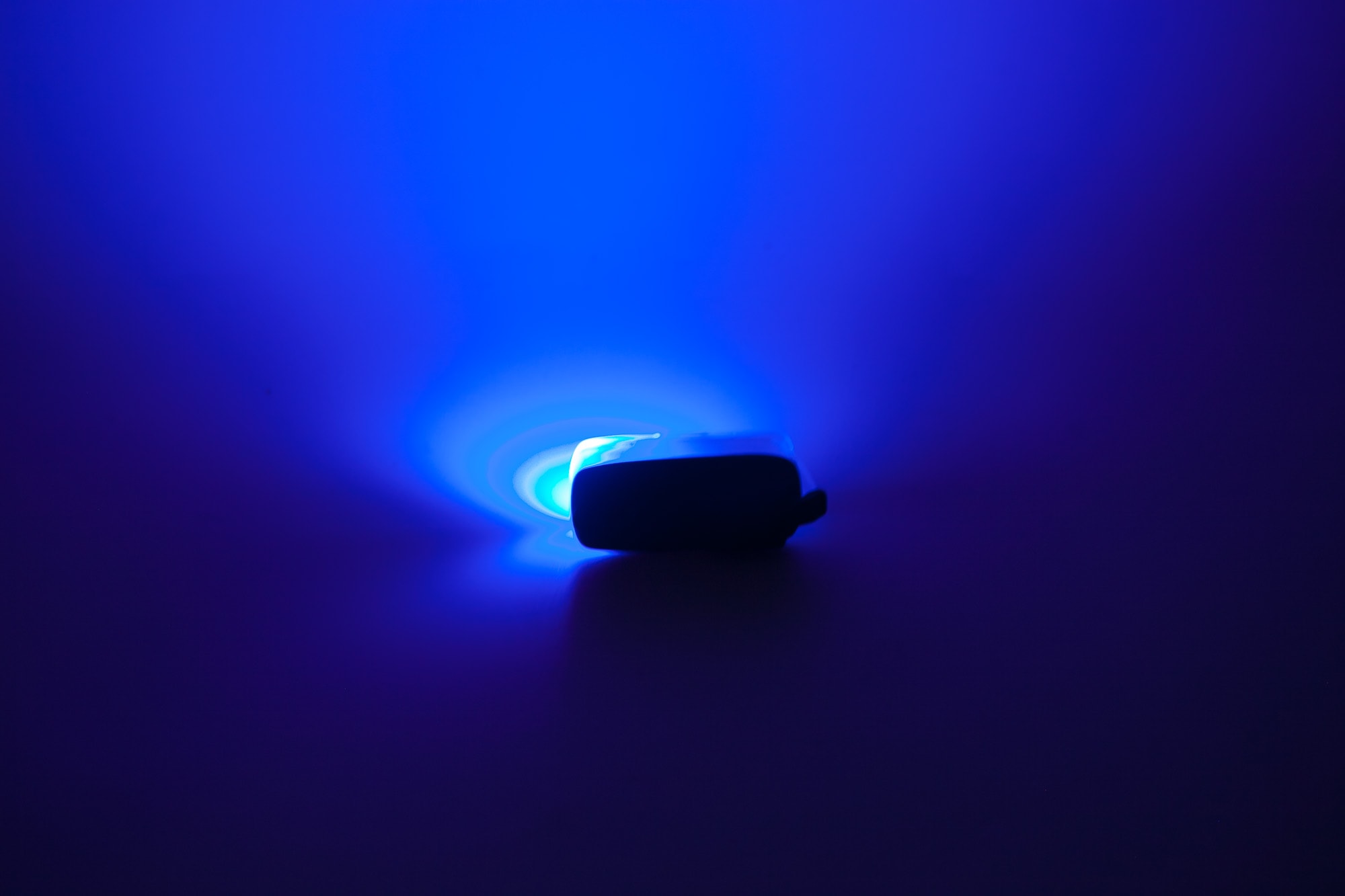

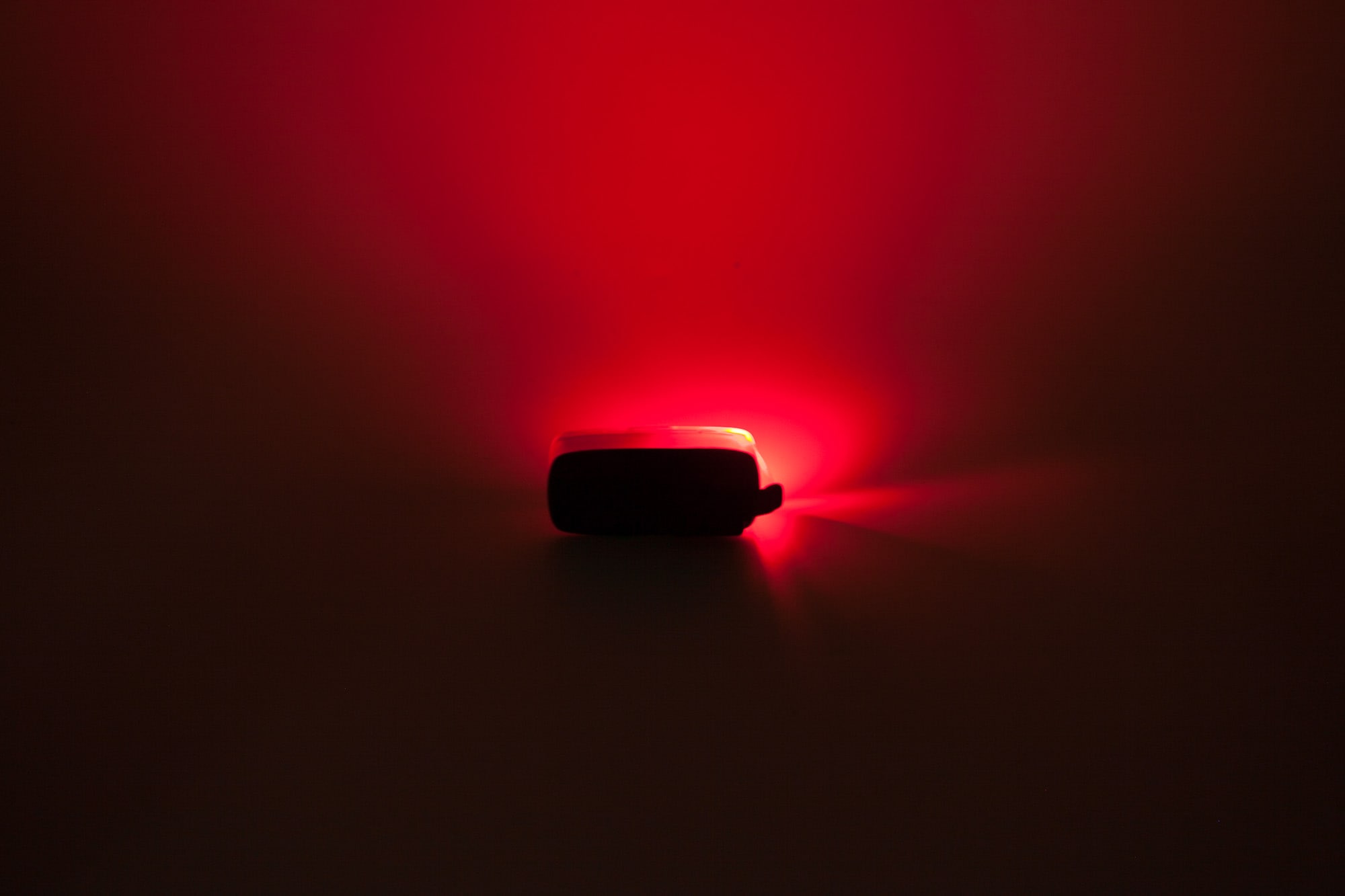


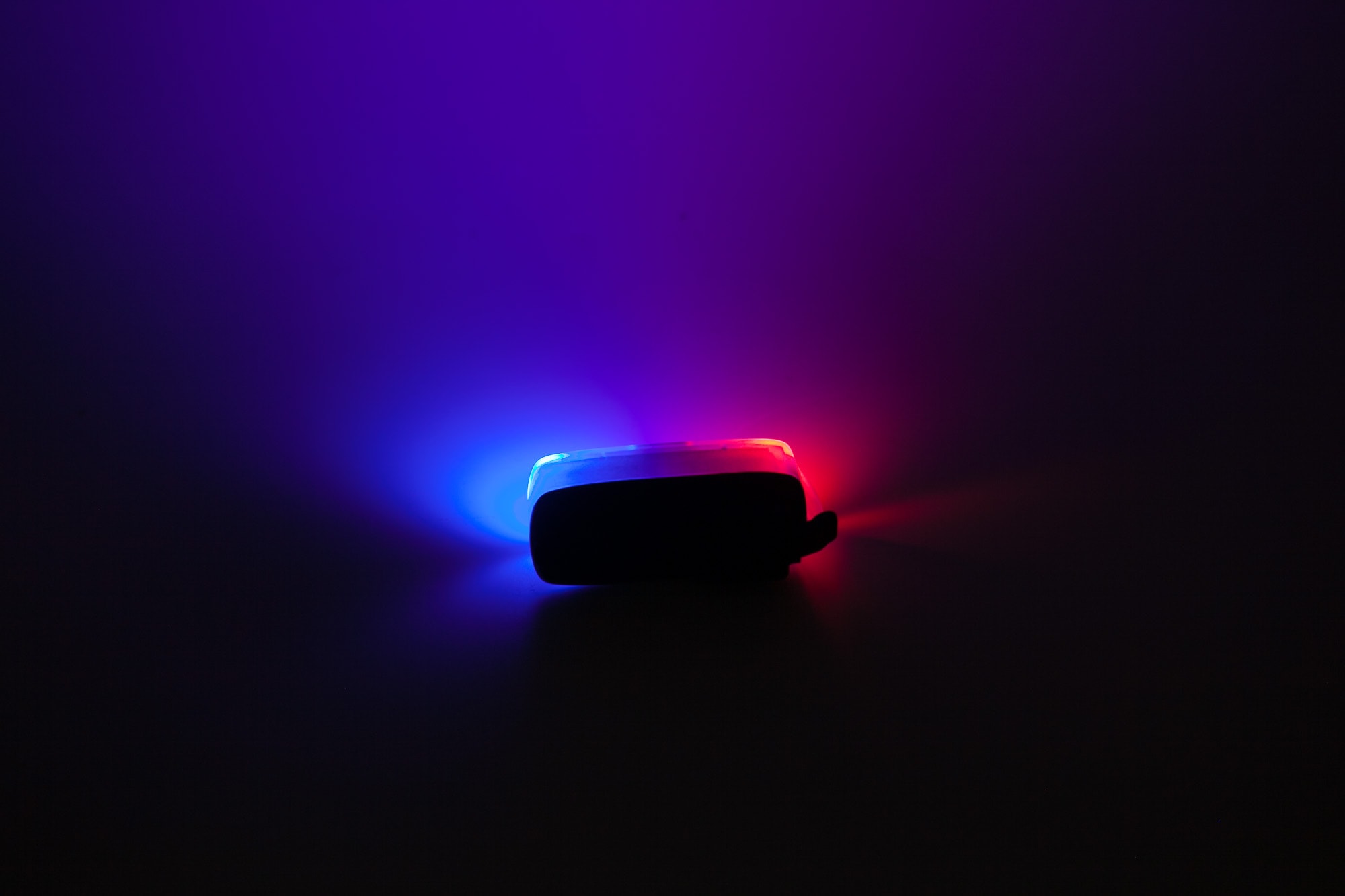
Disclaimer: This flashlight was sent to me for review at no cost by NEXTORCH. I have not been paid to review, nor have I been holding back on problems or defects.
Final Verdict
Pros
- Multiple colors
- With clip, multi functional
- Can be charged on the fly with USB-C
- Package includes charging cable
- Locater mode (blinking) is great for long term use.
- Runtimes are longer than advertised
- Relatively quickly charged in 2 hours
Cons
- No USB-C to USB-C charging
- Blue and red flashing may not be allowed to use in certain regions
- No real lockout mode, and battery is recommended to be recharged every 3 months
- IR mode is hard to see, and could potentially drain the battery while thinking it is turned off
Explanation on star ratings:
1: Avoid: my phone flashlight would be a better choice – 2: Poor: significant defect or issues; almost unusable – 3: Average: some defects or issues; but still usable 4: Good: recommended (minor issues) – 5: Great: highly recommended

4 stars: ★★★★
While our star rating provides a reliable indicator, we encourage you to read the full review to make an informed decision based on your own needs and preferences.
The UT41 is not your average flashlight, but more of a helpful tool for being seen in certain situations. It should never be your only or main light source, and that is also not the purpose of its existence.
For what it can be used, I like it quite a lot. It’s great to have as a backup light while biking, or as a beacon/location indicator while hiking or jogging.
The downside is that the battery need to be recharged every 3 months, when not in use. Plus, IR mode is hard to see in person, so it might look like the flashlight is actually turned off.
Buy your NEXTORCH UT41 here:
Get 10% off at NEXTORCH using our exclusive discount code: 1lumen10
1lumen selects and reviews products personally. We may earn affiliate commissions through our links, which help support our testing.